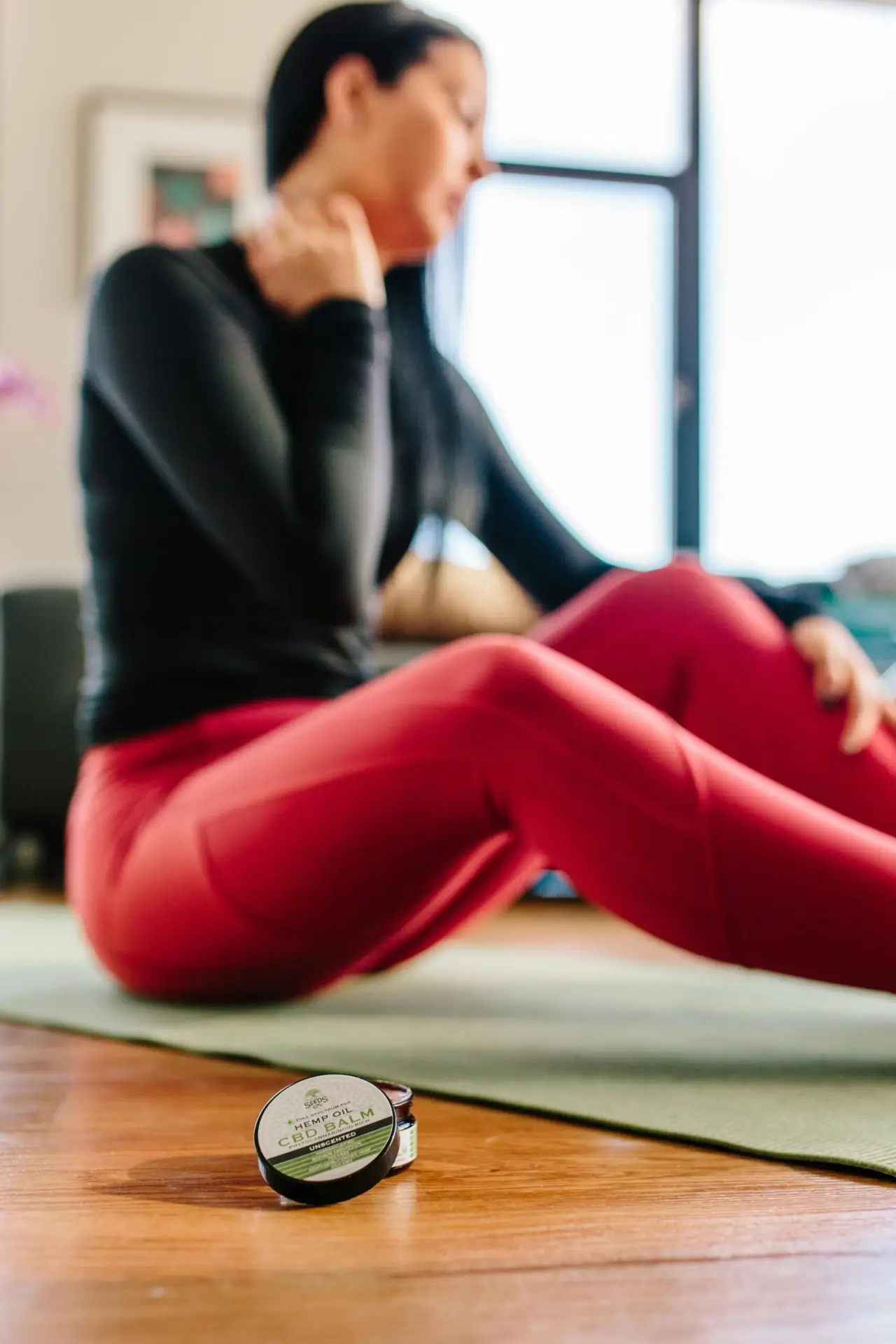
Natural Neck Pain Remedies: Neck pain has a way of stealing the little joys of everyday life. Turning to back out of the driveway, looking up to greet a friend, or simply settling into a pillow at night can spark a dull ache, a sharp pinch, or a stubborn headache that refuses to leave. If you’ve tried stretches, heat, new pillows, or even medications and still wake up stiff or sore, there’s a deeper story your body may be trying to tell you—one that starts at the very top of your spine.
At Lavender Family Chiropractic in Sarasota and Lakewood Ranch, we help people uncover that story and resolve neck pain by focusing on the delicate alignment of the upper cervical spine. In this in-depth guide, you’ll learn natural remedies that actually help, how misalignment in the upper neck contributes to “pinched nerves,” altered biomechanics, and decreased disc height, and why precise, gentle upper cervical chiropractic care can address the root cause so you can get back to life.
Natural Neck Pain Remedies: Why So Many Cases of Neck Pain Start in the Upper Neck
The top two bones of the neck—the atlas (C1) and axis (C2)—form a beautifully mobile joint complex that protects the brainstem and houses passageways for nerves and blood vessels. Because this region is designed for precision and movement, it is also vulnerable to subtle shifts from accidents, falls, repetitive posture, or long hours of “tech neck.”
When the atlas and axis lose their ideal relationship with the skull and the rest of the spine, the body adapts with muscle guarding, altered movement patterns, and neurological stress signals. Those adaptations feel like soreness, stiffness, headaches, or pain with certain motions—especially looking up, looking down, or turning to check a blind spot.
Foramina Narrowing, “Pinched Nerves,” and Referred Pain
Between each set of vertebrae are small bony tunnels called intervertebral foramina. Nerve roots exit through these openings to deliver motor control and sensation to the head, neck, and arms. When the upper neck shifts out of alignment, the angle and spacing of these foraminal tunnels can change. Muscles tense to stabilize, joints swell, and discs dehydrate, further reducing space.
The result can be nerve irritation or compression—what many people describe as a “pinched nerve.” This is why you may feel pain not only in the neck but also traveling into the shoulder, shoulder blade, forearm, or hand. Correcting the alignment at the top of the spine reduces irritation at the source, which often quiets symptoms downstream.
Altered Biomechanics and the “Domino” Effect
Your neck is a kinetic chain. If the top domino (the atlas) tips, the rest of the chain adapts. Small changes in head-on-neck posture increase strain on the lower cervical segments, elevate muscle tone in the suboccipitals and upper traps, and alter the way the mid-back and shoulders move.
Over weeks to months, these patterns reinforce themselves: joints grow stiff, muscles grow tender, and the brain begins to “expect” discomfort with certain motions. Correcting the top of the chain allows the rest to self-organize: muscles relax, movement normalizes, and effort decreases. This is why so many people feel lighter after an effective upper cervical correction.
Disc Loading and Decreased Disc Height
Cervical discs are living structures that rely on balanced motion to exchange nutrients and maintain height. When atlas-axis alignment is off, the load distribution through the neck shifts. Some discs and facet joints become overloaded; others lose the normal alternating compressive-decompressive rhythm that keeps them hydrated. The long-term consequence can be decreased disc height and premature wear—changes that add to narrowing around nerve roots and perpetuate pain. Restoring normal motion patterns at the top of the spine sets the stage for healthier disc mechanics throughout the neck.
Everyday Triggers That Worsen an Upper Cervical Misalignment
- Long hours with the head jutting forward toward a laptop or phone (“tech neck”).
- Sleeping on a stack of pillows or a rigid pillow that forces the chin down.
- Mouth breathing, jaw clenching, and prolonged stress that tightens the neck base.
- Old injuries—car accidents, sports impacts, or falls—that were never fully corrected.
- Overstretching or aggressive “self-adjusting,” which irritates already stressed joints.
If these feel familiar, you’re not broken—your body is compensating. The good news is that natural strategies can reduce irritation while you address the true driver: alignment.
Natural Neck Pain Remedies You Can Start Today
1) Build a Spine-Smart Desk Setup
Raise the top of your screen to eye level, keep elbows near 90 degrees, and let your chair support the mid-back. Place feet flat, hips slightly above knees, and bring the keyboard close so your head doesn’t creep forward. Set a 30–45 minute timer to stand, breathe, and reset your shoulders. Small ergonomic wins compound into big relief.
2) Sleep in Neutral, Not Numb
Use a pillow that fills the space between your shoulder and cheek when you lie on your side, or supports the natural curve of your neck when you’re on your back. If you wake with a stiff neck, try a thinner pillow, not a taller one. Avoid sleeping on your stomach—it twists the upper neck and compresses the facets for hours.
3) Contrast Therapy for Tight, Irritable Tissue
Apply a warm compress at the base of your skull for 10 minutes to relax guarding muscles, then briefly switch to a cool pack over the same area for 3–5 minutes to calm inflammation. Repeat this contrast cycle once or twice daily. Gentle, not extreme, temperatures work best.
4) Micro-Mobility and “Motion Snacks”
Every hour, perform 3–4 slow nods (yes), 3–4 gentle rotations (no), and 3–4 side bends (maybe) without pushing into pain. Follow with shoulder blade squeezes and soft chin retraction. Think of these as “motion snacks” that nourish your discs and joints.
5) Breathe Low and Long
High, shallow breathing keeps the upper neck on edge. Practice 4–6 slow nasal breaths with a longer exhale while focusing on belly and lower-rib expansion. This engages the diaphragm, calms the nervous system, and signals tight neck muscles that it’s safe to let go.
6) Hydrate and Nourish Your Discs
Discs are mostly water. Aim for steady hydration throughout the day, and include mineral-rich foods like leafy greens, berries, and omega-3 sources (wild-caught fish, flax). Many people also find magnesium glycinate in the evening supports muscle relaxation. Always consult your healthcare provider before adding supplements.
7) Train Postural Endurance, Not Just Strength
Your deep neck flexors and lower traps are endurance muscles. Try simple “chin tuck and lift” holds while lying on your back, scapular retraction holds with a band, and gentle thoracic extension over a towel roll. Start small—30 seconds of quality beats 5 minutes of strain.
8) Mindful Movement over Aggressive Stretching
Stiffness around a misaligned joint is protective. Aggressive stretching can provoke, not help. Favor slow, pain-free range-of-motion work, supported mobility tools (a soft peanut, not a hard ball), and mindful yoga that prioritizes alignment and breath.
9) Reduce Repetitive Micro-Irritants
Keep your phone at eye level, alternate your shoulder bag, and use a headset for calls. Schedule screen breaks, vary your tasks, and walk for 2–3 minutes after meetings. These micro-adjustments keep irritation from piling up.
10) Don’t “Crack” Your Own Neck
Self-manipulating may create a fleeting sense of release, but it typically moves the joints that are already moving too much while leaving the restricted segment alone. Over time, that can destabilize the area and perpetuate pain. Seek precise, objective correction instead.
Natural remedies are powerful allies, but they’re most effective when paired with care that restores healthy alignment at the source.
Upper Cervical Chiropractic: Addressing the Root Cause
At Lavender Family Chiropractic, we specialize in gentle, precise upper cervical care that corrects the alignment of the atlas and axis without twisting, popping, or forceful manipulation. Our approach is built on clarity: we gather objective data, craft an individualized plan, and make the lightest correction necessary to produce the biggest change.
Advanced Imaging and Functional Scans
We use state-of-the-art 3D CBCT imaging to visualize the exact three-dimensional relationship of your upper neck. This lets us see the direction and degree of misalignment and—just as important—what to leave alone. We pair imaging with functional nervous system scans (paraspinal infrared thermography) to assess how the autonomic nervous system is regulating. When the upper neck is aligned, the nervous system typically calms, muscular tone balances, and blood flow to and from the head improves.
A Gentle, Targeted Correction
Based on your unique measurements, we deliver a customized correction using an upper cervical protocol designed to be highly specific and low force. There is no twisting or cracking. Patients often describe the adjustment as surprisingly light, followed by a sense of ease or “unweighting” at the base of the skull. The goal is to restore the head–neck relationship so the rest of the spine can reset.
Stabilize, Then Strengthen
After alignment is restored, we focus on stabilization—teaching your body to hold the correction with simple, targeted exercises and personalized recommendations for work, sleep, and movement. Follow-up visits include objective checks to ensure the correction is holding. If your body is maintaining alignment, we don’t re-adjust just to adjust. We correct only when needed.
What to Expect on Your First Visit
- A thorough consultation to understand your history, injuries, and daily demands.
- Gentle orthopedic and neurological testing focused on the upper cervical region.
- 3D CBCT imaging (when clinically indicated) and functional nervous system scans.
- A clear report explaining what we found and how we can help.
- Your first gentle correction (if appropriate) and simple home strategies to protect it.
Real-World Changes Our Patients Notice
- Easier head rotation while driving and checking blind spots.
- Fewer morning headaches and less pressure behind the eyes.
- Shoulders that relax without constant cueing.
- Less reliance on daily pain relievers.
- More confidence returning to workouts, hobbies, and family time.
Putting It Together: A Simple Plan for Relief and Resilience
- Calm the irritation with natural remedies that respect your body’s protective responses.
- Correct the upper cervical misalignment with gentle, precise care.
- Stabilize the change so you can move, work, and sleep without fear of flare-ups.
- Build endurance and mobility so the neck stays healthy under real-life loads.
When you address both the “spark” (misalignment) and the “fuel” (daily habits and stressors), relief becomes more predictable—and it lasts.
Top 15 FAQs About Natural Neck Pain Relief and Upper Cervical Care
1) How do I know if my neck pain is coming from my upper neck?
Clues include headaches at the base of the skull, dizziness, TMJ tension, pain with looking up or down, or relief when you gently support the head with your hand. Imaging and an exam confirm it.
2) Can a small misalignment really close down the foramina?
Yes. Even subtle changes at C1–C2 alter joint angles and muscle tone, which can reduce the available space for nerve roots. Swelling and disc dehydration compound the effect.
3) Will I need to be “cracked”?
No. Our upper cervical adjustments are precise and gentle—no twisting, popping, or forceful manipulation. We correct the specific segment that needs help and leave the rest alone.
4) How fast will I feel better?
Some people notice relief after the first correction; others improve steadily over a few weeks as tissues calm and movement normalizes. The key is correcting and then holding alignment.
5) Do I still need to do exercises?
Yes—think of them as scaffolding for your correction. We’ll give you simple, targeted drills to help your body hold the new alignment and restore balanced mechanics.
6) Can upper cervical care help if my MRI shows decreased disc height?
Often, yes. While an adjustment doesn’t “regrow” a disc, restoring alignment and motion reduces excessive load, which can decrease pain and improve function.
7) Is it safe if I have arthritis?
Yes. Gentle, specific upper cervical corrections are ideal for arthritic necks because they avoid forceful motions. We tailor care to your imaging and comfort.
8) How is CBCT different from regular X-rays?
CBCT provides a three-dimensional view, allowing exact measurements of the atlas-axis relationship. That precision informs a customized correction and helps us track structural change.
9) What about headaches, migraines, or TMJ?
Because the upper neck influences nerves, blood flow, and jaw mechanics, aligning C1–C2 often reduces headache frequency and jaw tension. Many migraine patients see meaningful change.
10) Will I have to come forever?
No. We correct when needed and space visits as you stabilize. Many patients choose periodic wellness check-ins because they like how they feel and function when aligned.
11) Can I keep working out?
In most cases, yes—with a few short-term tweaks. We’ll show you how to protect the correction while you lift, run, or practice yoga, then build back to full intensity.
12) Do you take insurance?
Our office is out of network with insurance. Many of our patients receive a superbill to submit to their insurance for reimbursement based on their coverage. We offer many different payment options as well as finance options.
13) What if my pain shoots down my arm?
Radiating symptoms can signal nerve irritation. We evaluate for red flags and, if appropriate, co-manage with your medical team. Many cases respond well as alignment normalizes.
14) How long does a correction hold?
It varies. With precise correction and good daily habits, many patients hold for weeks to months. We teach you how to notice early signs of drift so we can correct before a flare.
15) What makes Lavender Family Chiropractic different?
Our blend of 3D CBCT, functional nervous system scans, and gentle, precise upper cervical adjustments—plus a caring, results-driven team—means you get clarity, not guesswork.
When to Seek Immediate Care
If you experience sudden severe headache unlike any you’ve had before, loss of vision, difficulty speaking, numbness or weakness in the arm or leg, fever with neck stiffness, or recent trauma with worsening neurologic symptoms, seek urgent medical care right away. We are happy to coordinate once you’re safe.
Why People in Sarasota, Bradenton, and Lakewood Ranch Choose Us
Our patients choose Lavender Family Chiropractic because we combine science, precision, and heart. You’ll meet a team that listens—Dr. Rusty Lavender, Dr. Jacob Temple, and Dr. Will Guzinski—and a process that respects your time and goals. We serve Sarasota, Bradenton, Lakewood Ranch, Parrish, Ellenton, Venice, Osprey, Punta Gorda, St. Petersburg, Siesta Key, Longboat Key, Lido Key, and Myakka City.
Take the Next Step
If you’re ready for natural relief that lasts, let’s start with clarity. Schedule a consultation to see whether an upper cervical misalignment is driving your neck pain and what a gentle, precise correction could do for you. Visit www.chiropractorsarasotaflorida.com or call (941)243-3729. With the right plan—and the right partners—you can move with ease again, sleep without worry, and get back to the activities that make you feel most like yourself. We are here, always.
A Short Case Story: From Morning Stiffness to Confident Movement
“C.” is a Sarasota small-business owner who visited our office after six months of morning neck stiffness, afternoon headaches, and the feeling that her neck was “fragile.” She had cycled through massage, two different pillows, and daily ibuprofen. Relief never lasted. On evaluation, we found a rightward atlas misalignment, elevated suboccipital tone, and a thermography pattern pointing to autonomic irritation. CBCT imaging confirmed the vector and degree of misalignment at C1 and showed compensatory strain through the lower cervical segments.
We delivered a gentle, measured upper cervical correction—no twisting, no popping—and coached her on alignment-friendly habits: a laptop riser, 30-minute “motion snacks,” and side-sleeping with a supportive pillow. Within a week, morning stiffness fell from a “7” to a “3.” By week three, her afternoon headaches were occasional and milder. Six weeks in, she completed her first pain-free set of light shoulder presses and, more importantly, felt steady while driving, working, and playing with her kids.
Not every case moves this quickly, and structure always guides pace. Yet the pattern is common: restore upper cervical alignment, remove small daily irritants, and the body often responds faster than expected. Our job is to provide the precision and the plan; your job is to give your body a fair chance to heal.
Your First 30 Days: A Roadmap
- Week 1: Calm. Reduce irritation with a precise correction, contrast therapy, and simple sleep and desk tweaks. Learn to change positions without provoking symptoms and avoid self-manipulation.
- Week 2: Hold. Verify that your correction is stable and refine ergonomics for work, driving, and phone use. Begin deep-neck and shoulder-blade endurance drills, 30–60 seconds at a time, always short of pain.
- Week 3: Restore. Expect smoother rotation and easier overhead reach. Add thoracic extension over a towel roll, gentle loaded carries, and walking intervals to build tolerance without flares.
- Week 4: Build. Progress endurance and mobility, taper visit frequency if you’re holding well, and establish a sustainable home plan. If you enjoy the gym, follow a clear re-entry path and watch key red flags.
This one-month cadence is customized to you, but the sequence—calm, hold, restore, build—keeps the process clear, trackable, and encouraging.
Pillows, Supports, and the “Neutral Window”
A good pillow doesn’t cure neck pain; it keeps alignment neutral long enough for healing to happen. Side sleepers usually do best with a medium-firm pillow that fills the shoulder-to-cheek gap without pushing the head up. Back sleepers often prefer a low-to-medium profile with gentle neck contouring. Travel with your pillow for consistency, and avoid stacking multiple pillows, which forces flexion and stresses the upper cervical joints. During desk work, a small lumbar roll reduces slouching and decreases strain at the base of the neck.
Who We Help, Every Day
We care for teachers, parents, healthcare workers, students, remote professionals, athletes, and retirees across Sarasota, Bradenton, and Lakewood Ranch who want natural relief and a plan they can own.
Lavender Family Chiropractic in Sarasota Florida offers complimentary consultations to learn more about you. Click the link below!
https://intake.chirohd.com/new-patient-scheduling/724/lavender-family-chiropractic
Visit our Website!
To learn more about us go to http://www.chiropractorsarasotaflorida.com
We also service Bradenton, Parrish, Ellenton, Ruskin, Venice, Tampa, St. Pete, Osprey, Longboat, Lakewood Ranch, Myakka City.
If you are not local, visit www.uccnearme.com to find a doctor in your area.



